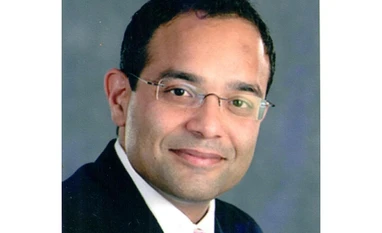With rising infections, Covid 2.0 has taken a huge toll on India’s health infrastructure. The economic impact is nowhere close to the scale of impact on public health. This is more to do with the fact that this time around, the containment measures have been more localised. Last year, India had gone for a national lockdown to build health systems and infra to fight the first wave.
The second wave has shown that we need to further augment our health infrastructure. As a first step, the Reserve Bank of India (RBI) has given leeway to banks to borrow Rs 50,000 crore at repo rate (4 per cent) for onward lending for health care spending by hospitals, manufacturers and individuals. These loans will be classified as Covid loans. The credit risk is to be borne by the banks. As an additional incentive, banks can park an amount equal to Covid loans in RBI’s overnight window at a premium of 0.4 per cent to the prevailing rate. In a way, this will take care of credit losses that may emerge from these loans. These loans will also be classified under priority sector lending. Thus, banks have been given generous incentive to lend for health spending.
Even with local containment measures, the informal sector comprising vendors and daily wage labour suffer the most since their mobility is restricted. Small Finance Banks (SFBs) provide last mile supply of credit to small businesses and individuals. Thus, the central bank has given SFBs an option to borrow Rs 10,000 crore at repo rate for fresh lending up to Rs 10 lakh per borrower. This is almost 10 per cent of the credit book of SFBs as of December 2020. In order to ensure availability of credit to small borrowers, SFBs lending to relatively smaller Micro Finance Institutions (MFIs) for onward lending will be eligible for priority sector lending.
Small businesses and self-employed individuals will find it difficult to repay their loans as cash flows dry up when retail stores in large markets are not operational. For this, RBI has now introduced resolution framework 2.0, under which those who have not availed benefit of restructuring earlier and are standard till March 31, 2021 are now eligible for restructuring. For those who did avail of restructuring up to two years are now eligible for an extension of residual tenor up to two years. As was seen last year, working capital cycles do get stretched during such times. Thus, banks can review working capital requirements for small businesses.
The RBI has gone one step ahead in giving a boost to digital Know Your Customer (KYC) requirements by extending the same to proprietorship firms and allowing periodic updating among others. This will improve ease of doing banking.
Also Read
While GST collections for March 2021 have hit an all-time high, tax collections are bound to take a hit in coming months as seen in loss of economic momentum in diesel sales in the month of April over March. However, state governments will have to spend on purchasing vaccines and health equipment, paying salaries and continuing with welfare schemes. Here, RBI has eased overdraft limits and conditions for states.
For the Centre, RBI will be doing the second round of purchase under G-SAP 1.0 (government securities acquisition program) of Rs 35,000 crore on May 20. Bond yields did react favourably to this announcement. These are the first set of measures to mitigate the impact of the second wave. Our strategy for the second wave is more decentralised. Thus apart from RBI, states will also be announcing measures to mitigate the economic impact in coming months. A few states have made a beginning. The rest of the measures will follow.
(Sameer Narang is chief economist at Bank of Baroda. Views expressed in the article are personal.)
)